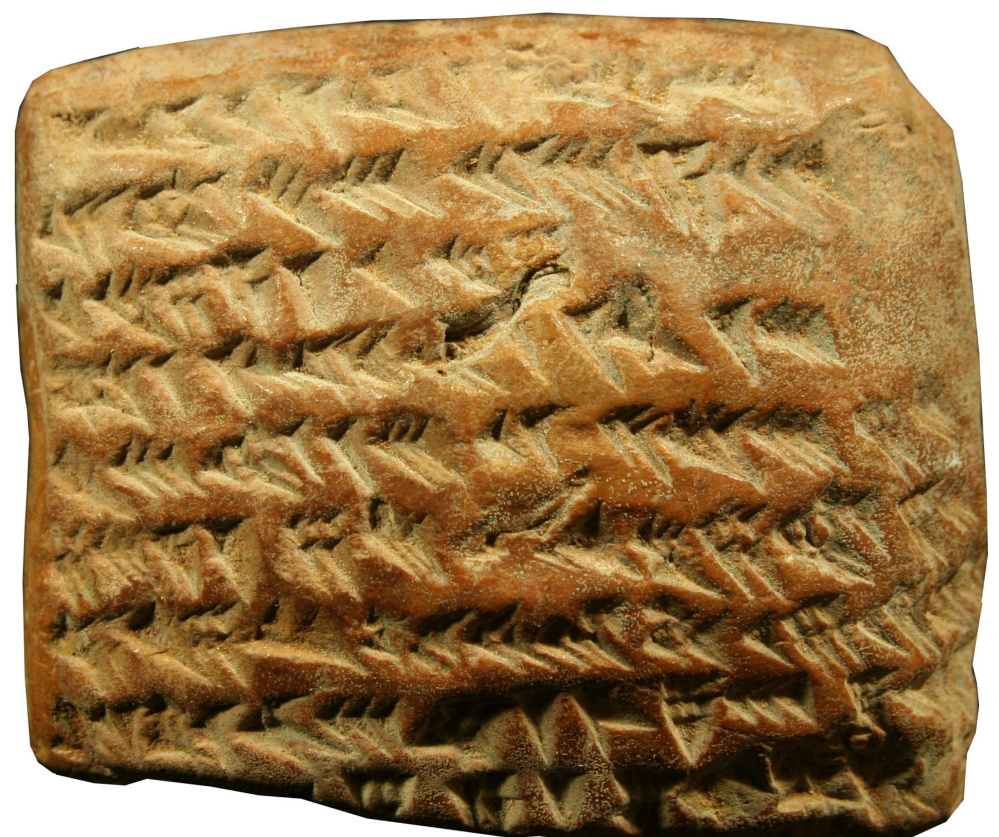The medieval mathematicians of Oxford managed to invent a simple form of calculus that could be used to track the motion of heavenly bodies. But now a scholar studying ancient clay tablets suggests that the Babylonians got there first, and by at least 1,400 years.
The astronomers of Babylonia, scratching tiny marks in soft clay, used surprisingly sophisticated geometry to calculate the orbit of what they called the White Star – the planet Jupiter.
These tablets are quite incomprehensible to the untrained eye. Thousands of clay tablets – many unearthed in the 19th century by adventurers hoping to build museum collections in Europe, the United States and elsewhere – remain undeciphered.
But they are fertile ground for Mathieu Ossendrijver of Humboldt University in Berlin, whose remarkable findings were published Thursday in the journal Science. Ossendrijver is an astrophysicist who became an expert in the history of ancient science.
For a number of years he puzzled over four Babylonian tablets housed in the British Museum in London.
“I couldn’t understand what they were about. I couldn’t understand anything about them, neither did anyone else. I could only see that they dealt with geometrical stuff,” he said.
Then one day in late 2014, a retired archaeologist gave him some black-and-white photographs of tablets stored at the museum. Ossendrijver took notice of one of them, just two inches across and two inches high. This rounded object proved to be a kind of Rosetta Stone.
Dubbed Text A by Ossendrijver, the little tablet had markings that served as a kind of abbreviation of a longer calculation that looked familiar to him. By comparing Text A to the four previously mysterious tablets, he was able to decode what was going on: This was all about Jupiter. The five tablets computed the predictable motion of Jupiter relative to the other planets and distant stars.
“This tablet contains numbers and computations, additions, divisions, multiplications. It doesn’t actually mention Jupiter. It’s a highly abbreviated version of a more complete computation that I already knew from five, six, seven other tablets,” he said.
Most strikingly, the methodology for those computations used techniques that resembled the astronomical geometry developed in the 14th century at Oxford. The tablets have been authoritatively dated to a period from 350 B.C. to 50 B.C.
The calculations describe Jupiter’s motion over time as it appears to speed up and slow down in its journey across the night sky. Those calculations are done in a surprisingly abstract way – the same way the Oxford mathematicians would do them a millennium and a half later.
“It’s geometry, which is itself old, but it’s applied in a completely new way, not to fields, or something that lives in real space, but to something that exists in completely abstract space,” Ossendrijver said. “Anybody who studies physics would be reminded of integral calculus.” Which was invented in Europe in 1350, according to historians.
“In Babylonia, between 350 and 50 B.C., scholars, or maybe one very clever guy, came up with the idea of drawing graphs of the velocity of a planet against time, and computing the area of this graph – of doing a kind of computation that seems to be thoroughly modern, that is not found until 1350,” he said.
Alexander Jones, a professor at New York University’s Institute for the Study of the Ancient World, praised Ossendrijver’s research, which he said shows the “revolutionary brilliance of the unknown Mesopotamian scholars.”
– From news service reports
suBhead pls
Headerg
Subheader Subheader Subheader Subheader
Headerg
Subheader Subheader Subheader Subheader
Headerg
Subheader Subheader Subheader Subheader
Heady Heady Heady Heady
Subheader Subheader Subheader Subheader
Heady Heady Heady
Copy the Story LinkSend questions/comments to the editors.



Success. Please wait for the page to reload. If the page does not reload within 5 seconds, please refresh the page.
Enter your email and password to access comments.
Hi, to comment on stories you must . This profile is in addition to your subscription and website login.
Already have a commenting profile? .
Invalid username/password.
Please check your email to confirm and complete your registration.
Only subscribers are eligible to post comments. Please subscribe or login first for digital access. Here’s why.
Use the form below to reset your password. When you've submitted your account email, we will send an email with a reset code.